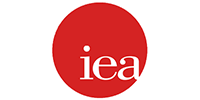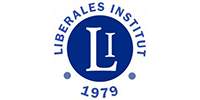How CPI calculations misrepresent real inflation
Until only a few months ago, inflation dominated the headlines and monopolized the attention of the financial press. Ordinary consumers and savers were extremely worried about its impact on their household budgets and shrinking paychecks. These concerns appear to have somewhat eased now that official consumer price index (CPI) data is on a downward trend, seemingly indicating that spiraling prices are now under control.
Even though in most advanced economies inflation is still significantly higher than the 2 percent target that central bankers have set, recent CPI readings have reassured the population. While this trend may seem encouraging at face value, it does raise the question of how accurately these readings reflect the average consumer’s experience.
Calculations based on flawed assumptions
In recent decades, many have criticized the way CPI figures are calculated, highlighting their limitations in accurately capturing real inflation, or even pointing to bias on the part of their publishers. Chief among these problems is the very basis of the calculation: the concept of a “fixed basket” representing a predetermined set of goods and services that reflects the average consumption pattern in a specific base year. This includes basic food and beverages, housing rental, clothing, transportation and medical care costs, as well as education, communication and recreational expenses.
However, this model does not take into account the evolution of consumer preferences and spending habits over time due to changes in lifestyle, technology and societal trends. The fixed basket, based on a historical snapshot, may not be representative of contemporary consumption patterns. Even though various adjustments are regularly implemented, they largely fail to reflect the shifts in the real economy.
For example, the fixed basket approach assumes that the quality of goods and services remains constant over time. On one hand, technological advancements and other improvements can enhance the quality of products, leading to an underestimation of the true value obtained by consumers. On the other, if quality deteriorates, for instance because of cost-cutting measures on the part of producers, the fixed basket may not accurately capture that decrease in value.
To account for quality upgrades, CPI statisticians in the United States introduced an extremely obfuscated concept called “hedonic adjustment,” which lowers prices in the CPI calculations to offset the higher quality. Determining the monetary value of these improvements is arbitrary and introduces subjectivity into the process, potentially distorting the inflation rate.

Another major blind spot of CPI calculations is that they exclude asset prices, completely neglecting the market value of financial and real assets such as stocks, bonds, real estate and other investments. This renders the metric highly problematic, as changes in asset prices disproportionately affect the wealth of individuals with higher incomes. A measure that fails to account for these variables is an unreliable policy tool. It also creates a distorted picture of reality, leading to stock market or real estate bubbles.
However, the most widely criticized aspect of the CPI is that the goods and services that the fixed basket includes are assigned different weights by CPI statisticians, based on their relative importance to the average household. For instance, they might assume that rental costs account for 30 percent of total household expenditures, food and beverages for 20 percent, transportation for 10 percent, and so on. Obviously, the higher the relative importance or weight that a certain item is assigned, the more influential that item becomes in the total calculation. For example, if fuel prices suddenly explode, then those particular price increases are seen as “driving inflation,” as we saw two winters ago, especially in Europe.
Crucially, this relative importance regularly changes, allowing for even more subjective and arbitrary tweaks to come into the CPI calculations. These modifications can then hide the impact of sharply rising prices of essential items. Such unreliable official inflation readings warrant serious concerns over the potential political pressure and influence.
Consequences of inaccurate inflation data
One of the most important effects that an inaccurate and possibly biased measure of inflation has on the consumer and taxpayer is that it directly influences and justifies monetary and fiscal policy decisions. Cutting or hiking interest rates, quantitative easing or tightening, stimulus or austerity policies all take the official inflation rate into account. For instance, the latest policy shift of the U.S. Federal Reserve, the decision to halt rate hikes, was ostensibly based on the argument that inflation is once again under control, at 3.14 percent.
If this measure is misaligned with the real-life experience of most people and significantly understates the real inflation rate, the consequences can be catastrophic. And the more the official figures diverge from reality, the more serious the impact of the decisions they underpin will be on working people, savers and taxpayers, while disproportionately benefiting the asset-rich and the government itself.
Interest rates can be cut prematurely and kept artificially low for much longer, ensuring access to cheap credit leading to stock market booms and real estate bubbles, while fueling inflation and shrinking ordinary workers’ paychecks. At the same time, the lower the official inflation rate, the less governments need to spend on cost-of-living adjustments for welfare programs and state pension schemes. And the lower the interest rates, the less they need to spend on debt-financing obligations.
Scenarios
All of these distortions can be neutralized only if the CPI calculation methods somehow change and the measure eventually comes to represent reality more accurately. However, this is rather unlikely, as many nations seem to be getting only more liberal with the aforementioned tweaks and weight recalibrations.
Most likely: CPI calculations become increasingly flawed
In the most probable scenario, CPI data will only become more and more unrealistic. The most important consequence will most likely have to do with a further rise in inequality as well as government debt levels and excesses. This will punish taxpayers, savers and most prudent, responsible investors, as reasonable financial planning becomes increasingly untenable. One cannot plan ahead using flawed data and unsound assumptions, especially when these paint a picture that is fundamentally different to reality.
This scenario would also likely be extremely detrimental to society and possibly political stability as well. Enforcing monetary policies under the erroneous assumption that inflation is under control, thereby fueling further consumer price increases, would disproportionately affect those on the lower end of the income scale, those who rely on public pensions, those living from paycheck to paycheck and without exposure to artificial stock market rallies. The financial pressure these groups would come under, combined with a generalized sense of unfairness, could cause widespread public discontent and anger, creating fertile ground for extreme political ideologies.
This material was originally published here:
































